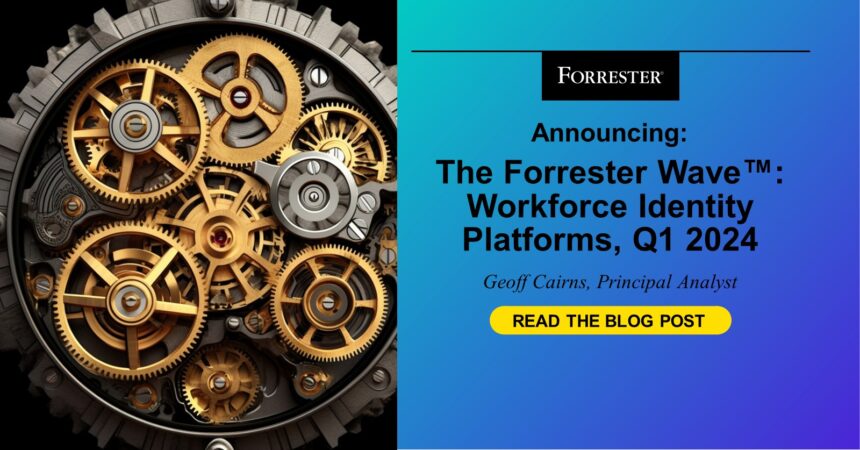Last Wednesday, we released The Forrester Wave™: Workforce Identity Platforms, Q1 2024. We looked at the top 12 vendors in the market and evaluated them across 24 criteria. Workforce identity platforms energize a centripetal (inward) force necessary to combat the centrifugal (outward) forces that challenge identity and access management (IAM) deployments in organizations today.
These centrifugal forces are magnified by an expanding volume of human and machine identities that need to be managed. Too often, today’s IAM deployments are characterized by identity sprawl — multiple user accounts and credentials across siloed systems — and poor identity hygiene, creating vulnerabilities such as orphaned accounts, overprivileged users, and overpermissioned roles that attackers exploit and gaps that hinder employee productivity.
In response, the workforce identity market is experiencing significant innovation, vendor consolidation, and technology convergence. Since this Wave evaluation period ended, we have already seen further M&A activity, including Entrust’s intent to purchase Onfido and Okta’s acquisition of Spera Security, further highlighting the continued evolution of the IAM market and IAM vendors’ commitment toward building comprehensive workforce identity platforms. Our Wave evaluation process identified three key workforce identity trends:
- Adaptive identity security unites Zero Trust principles and user productivity. Organizations are seeking unified workforce IAM solutions that leverage risk-based identity analytics to deliver efficient management and enforcement of least privileged access. Capabilities such as identity verification, phishing-resistant passwordless multifactor authentication, fine-grained access controls, identity governance, device trust management, and identity threat detection are becoming essential for realizing an effective IAM strategy. Workforce identity platforms capitalize on purposeful convergence of these IAM capabilities with seamless integrations with third-party enterprise applications and systems (HR, ERP, ITSM) to enhance security effectiveness with less end-user friction and lower administrative overhead.
- Lifecycle is the lifeblood of identity. Rooted in the common denominator of time, lifecycle is a bonding element in the newfound chemistry between identity security and user productivity. Today’s dynamic workforce, shaped by remote work, the gig economy, and digital transformation, makes identity lifecycle management a catalyst for vendor innovation. Applying ML and AI advances, emerging IAM technologies (e.g., verifiable credentials, biometrics), and enhanced workflow orchestration, workforce identity platforms enable streamlined joiner-mover-leaver processes and automation of just-in-time account and credential provisioning while providing measures for a commensurate level of identity assurance.
- Trust is foundational to workforce IAM adoption. Customers value workforce identity platforms that are adaptive and extensible, yet above all else, the platforms must be secure, resilient, and trustworthy. Vendor consolidation and SaaS delivery models bring greater third-party risk considerations for buyers. The workforce identity platform vendor’s own cybersecurity and risk posture is now intrinsic to the evaluation and purchasing process, and the levers of trust — accountability, consistency, competence, dependability, empathy, integrity, and transparency — are key to attracting and retaining customers.
If you would like to learn more about the workforce identity platforms space, I recommend the following:








